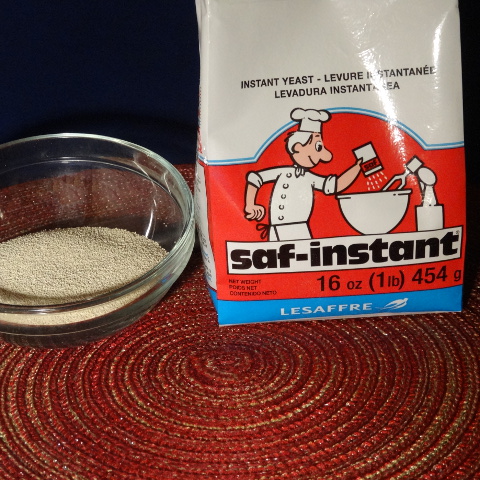
Packet, cake, dried active, rapid-rise… what’s the difference? What is best for my recipe? These are questions we have all asked when staring at the yeast available on the grocery shelves. What yeast needs to be put in the fridge? What can be stored at room temperature?
Most yeast you buy at the store is Saccharomyces cerevisiae. It is the same yeast your baker uses, and the same yeast used to brew your favorite beer. There also exist wild yeasts, but the only one worth noting here is Saccharomyces exiguus which makes sour breads sour. All yeasts act the same in that they convert food to alcohol or carbon dioxide. Yeast is inhibited by sugar, salt and fats (including eggs). Even though most yeast is of the same species the preparation and storage is different. Here we will go over the different preparations of yeast and how to use them.
Cream Yeast: An active slurry of yeast in growth media. Normally only available to industrial bakers, it’s similar to an established starter but will only contain S. cerevisiae. Really the only point is knowing that it exists.
Compressed Yeast: These are the wonderful cakes of yeast you see in the grocery store. Compressed yeasts are the yeast cells with most of the media removed and the remaining sludge formed into cakes. These are very perishable and can ONLY be stored in the fridge. They are falling out of favor because so many people do not bake bread frequently and the cakes do expire quickly. The benefit of cake yeast is that you don’t need to proof the yeast. It is active once it reaches room temperature.
Active Dry Yeast: This is what most people associate with yeast. They are small granules of yeast covered in a dry media (yeast extract) and are dried. These granules, while they do contain live cells, need proofing to activate the yeast (proofing refers to the activation of yeast cells in a slurry of warm water, sugar, and flour). Each one of the little packets contains 2 1/2 teaspoons of granules. These yeasts store well at room temp or in the fridge.
Instant Yeast: This is similar to active dry yeast, but the granules are smaller and contain more active cells. Instant yeast has a shorter shelf life than active dry yeast. It is best to store instant yeast in the refrigerator. Instant yeast does not need to be proofed.
Rapid-Rise Yeast: This is exactly what it sounds like. Dough rises faster. Rapid-rise yeast has small granules like instant yeast that do not need proofing to dissolve in dough. This yeast is a little controversial because a lot of bakers say it will affect the taste of the dough. Cooks Illustrated says it does not in direct rise applications, but honestly I don’t think I would want to chance it. Rapid-rise yeast is mostly marketed for bread machine use but I’d still avoid it.
As for what I use, I buy large vacuum-packed bricks of instant yeast. I still proof my yeast because as a biochemist, when I start the dough I want the yeast to go to work right away. When I cannot get instant, I prefer cake but sometimes am unable to find it. As a last attempt I will use dry active.
A quick note on temperature: Temperature matters. Living in Ohio, in the winter my rise times can as much as double when the house is cold. The 10 degree difference in room temp makes a big difference. I try to combat it the best I can with rising my doughs on the stove top with the oven on, but for brioche and some other breads I just resign myself to rising overnight. Be aware of the temperature in your kitchen before you start.


